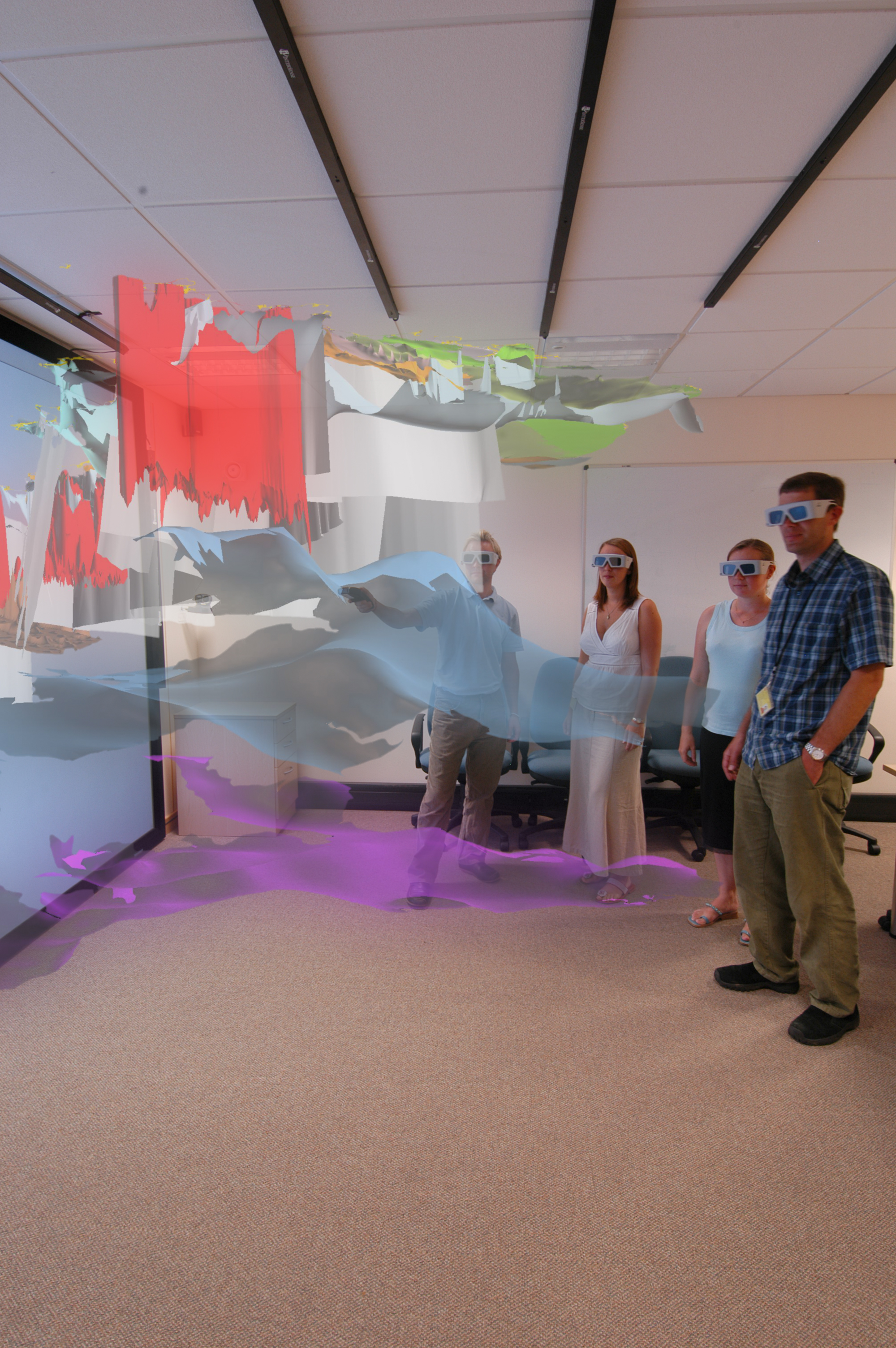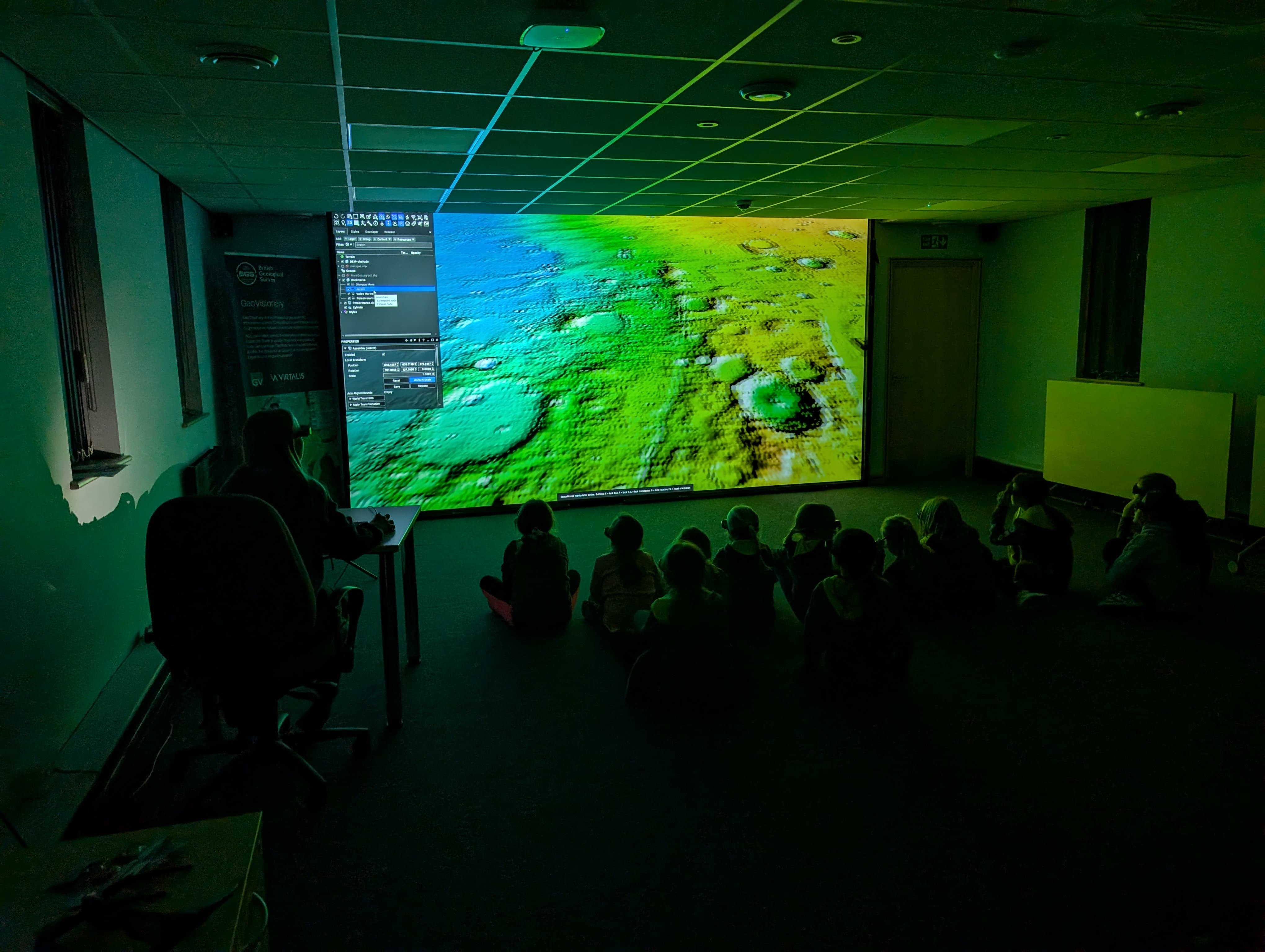Celebrating 20 years of virtual reality innovation at BGS
Twenty years after its installation, BGS Visualisation Systems lead Bruce Napier reflects on our cutting-edge virtual reality suite and looks forward to new possibilities.
08/04/2025 By BGS Press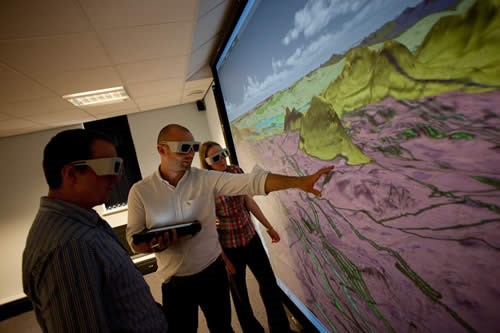
Twenty years ago, BGS took a bold step into the world of virtual reality (VR), pioneering 3D visualisation in geological surveying. From its first immersive 3D room in 2005 to its global influence today, the journey of VR at BGS has been one of constant innovation, exploration and impact.
The early days: a new perspective on geology
BGS has been working to improve understanding of the potential for CO2 storage as part of its International Geoscience Research and Development programme. During early 2005, Virtalis Ltd. installed BGS’s first 3D visualisation facility at our headquarters in Keyworth, Nottinghamshire, featuring a state-of-the-art Christie S-4K projector and nVidia Quadro graphics. A cutting-edge Intersense motion tracking system brought geological models to life, offering an immersive way to explore complex 3D data.
Initially, these rooms served as a platform to showcase geological model outputs from the BGS GeoScience Spatial Model (DGSM) programme. However, their potential quickly expanded beyond presentations, opening the door to practical applications in 3D modelling and landscape visualisation. BGS commissioned Virtalis to develop immersive VR experiences for GOCAD models and digital terrain models, overlaying geological maps, aerial photographs and satellite images to enrich understanding of geological formations.
A showcase for science
The technology quickly became a key feature of BGS, attracting a diverse range of visitors. These included school groups, MPs, top government scientific advisors, VIPs and even royalty — including the Princess Royal — who were all invited to witness BGS’s cutting-edge capabilities firsthand. These demonstrations proved to be a powerful tool for communicating the importance of geological research.
Expanding the horizon: virtual field reconnaissance
By 2006, the vision for BGS VR had grown. The next challenge was making VR an interactive, integral part of geological surveying. A cross-disciplinary project was launched, bringing together the land survey, remote sensing and data and digital systems teams to develop virtual field reconnaissance (VFR). The aim was ambitious: integrate field data collection with VR landscapes, enabling geologists to conduct initial assessments remotely before heading into the field. This initiative aligned perfectly with BGS’s acquisition of high-resolution aerial orthophotos and a 5m digital terrain model (DTM) and digital surface model (DSM) from Intermap Technologies.
To handle the vast datasets seamlessly, Virtalis was commissioned once again, this time to build a prototype virtual landscape visualisation system. The result was a game-changing enhancement to geological fieldwork, increasing efficiency and accuracy and giving us the ability to plan research in a way never before possible.
Evolution and global expansion
In 2010, the original immersive 3D visualisation facility (i3DVF) needed a new home due to building works. BGS created a cutting-edge VR hub, complete with an upgraded projector, screen and computing power. Six years later, in 2016, the facility saw another major upgrade: the world’s first 4K projection system in a geological survey organisation. The enhanced resolution, combined with new, highly detailed 2 m DTM and DSM data from the Pan-Governmental Data Agreement, took geological visualisation to an unprecedented level.
What began as a pioneering project within BGS has since spread across the world. The integration of GeoVisionary and i3DVF technology has inspired geological surveys, mining companies, universities, and environmental organisations globally. From Alaska to South Africa, Malaysia to Brazil, BGS’s VR expertise continues to revolutionise how geologists explore and understand our planet.
Looking ahead
As we celebrate 20 years of VR at BGS, we also look to the future. With advancements in artificial intelligence, real-time data processing and even more immersive visualisation technologies, the possibilities for geological VR are boundless. One thing is certain: BGS will remain at the forefront, pushing the boundaries of innovation and transforming how we see the Earth.
Here’s to the next 20 years of discovery!
Further reading
- BGS 3D Visualisation Systems
- Why 3D? The need for solution-based modelling in a national geoscience organisation
- Digital geoscience spatial model project final report
Relative topics
Related news
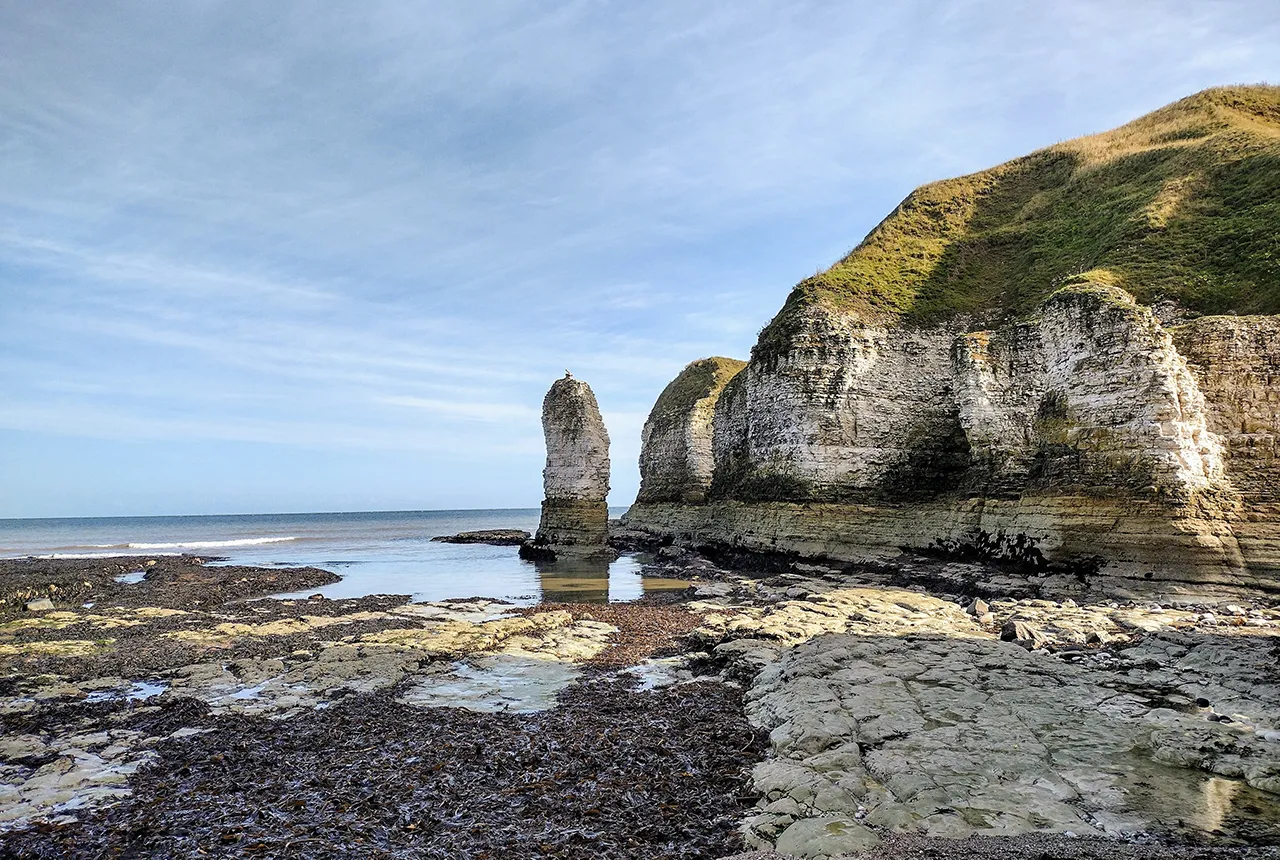
New geological maps of the Yorkshire Wolds to better inform groundwater management and policy decisions
17/12/2025
The new mapping provides crucial data on localised geological issues that may assist in protecting water supplies.

New 3D model to help mitigate groundwater flooding
08/12/2025
BGS has released a 3D geological model of Gateshead to enhance understanding of groundwater and improve the response to flooding.
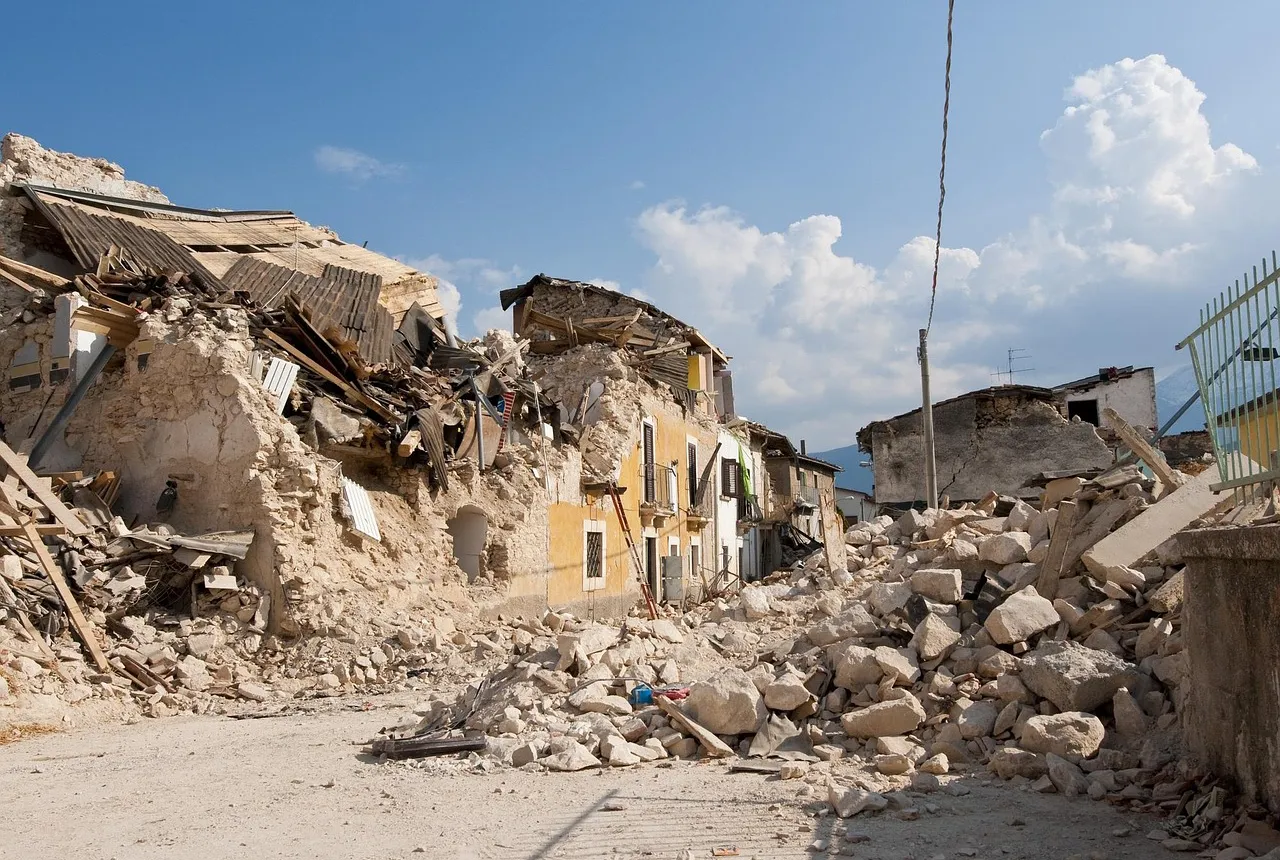
New research shows artificial intelligence earthquake tools forecast aftershock risk in seconds
25/11/2025
Researchers from BGS and the universities of Edinburgh and Padua created the forecasting tools, which were trained on real earthquakes around the world.
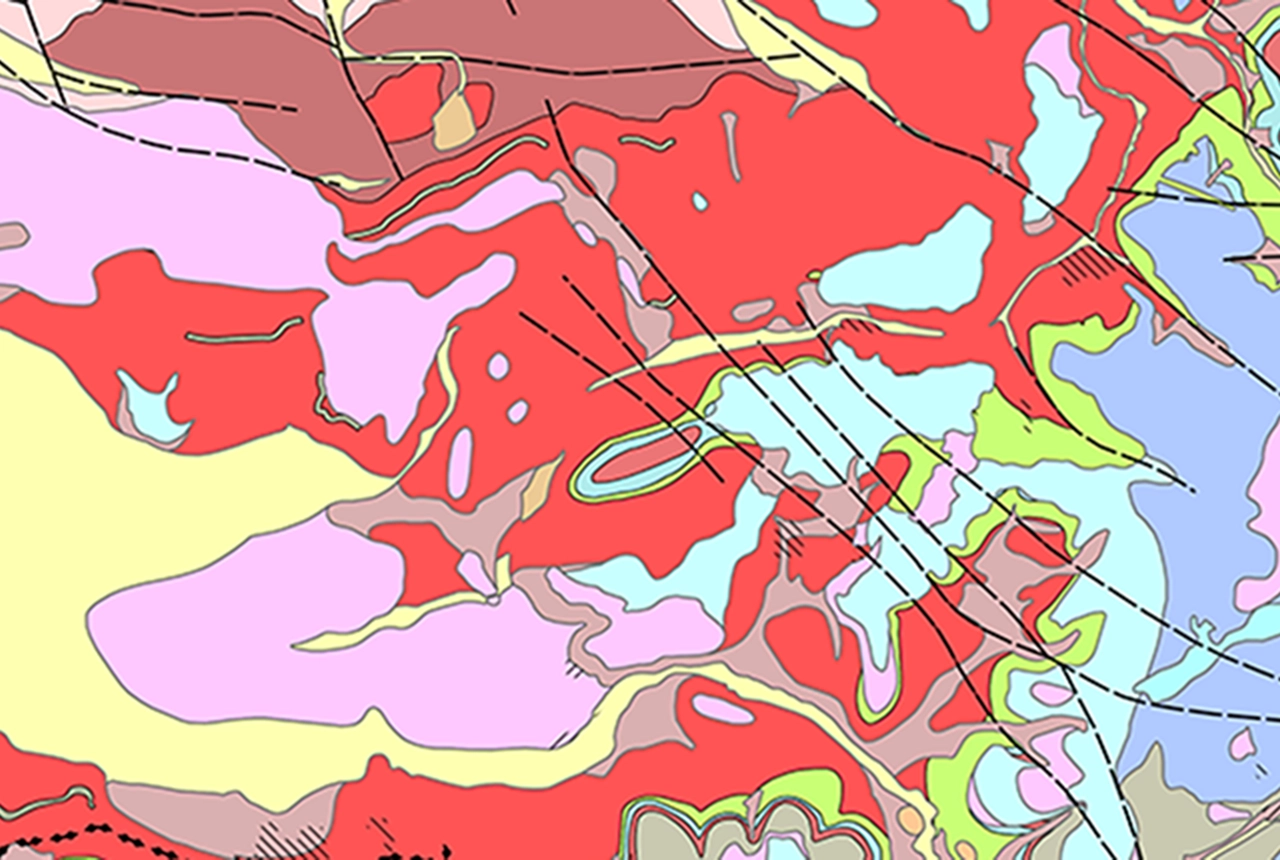
Latest BGS Geology 50K mapping data launched
06/11/2025
Some of our most widely used maps have received a major update, including the 1:50 000-scale map series that now includes enhanced coverage of Great Britain.
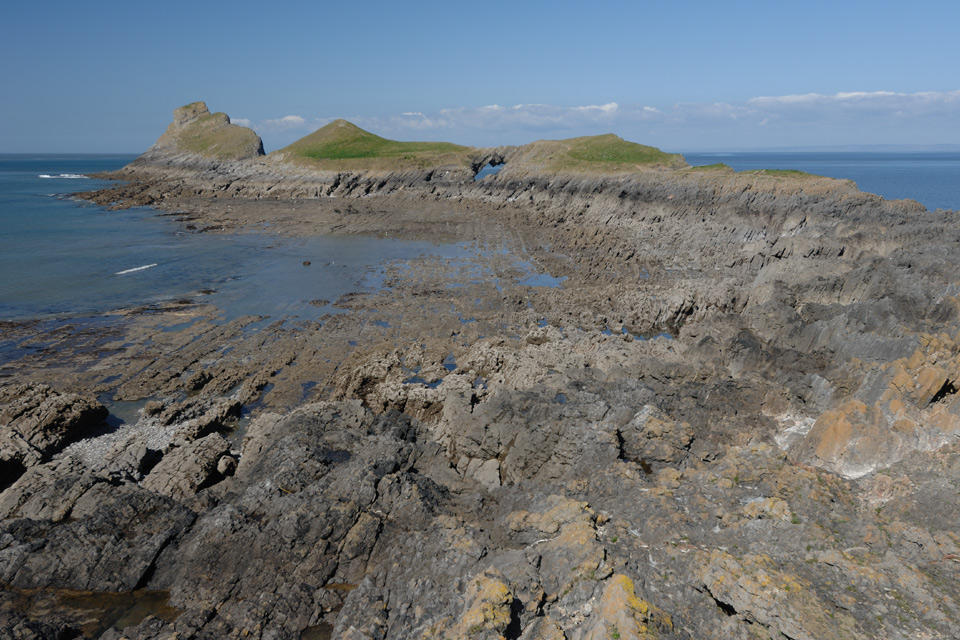
Extended seabed geology map of the Bristol Channel published
07/10/2025
BGS has released significantly extended high-resolution maps that will support offshore green-energy initiatives in the area.
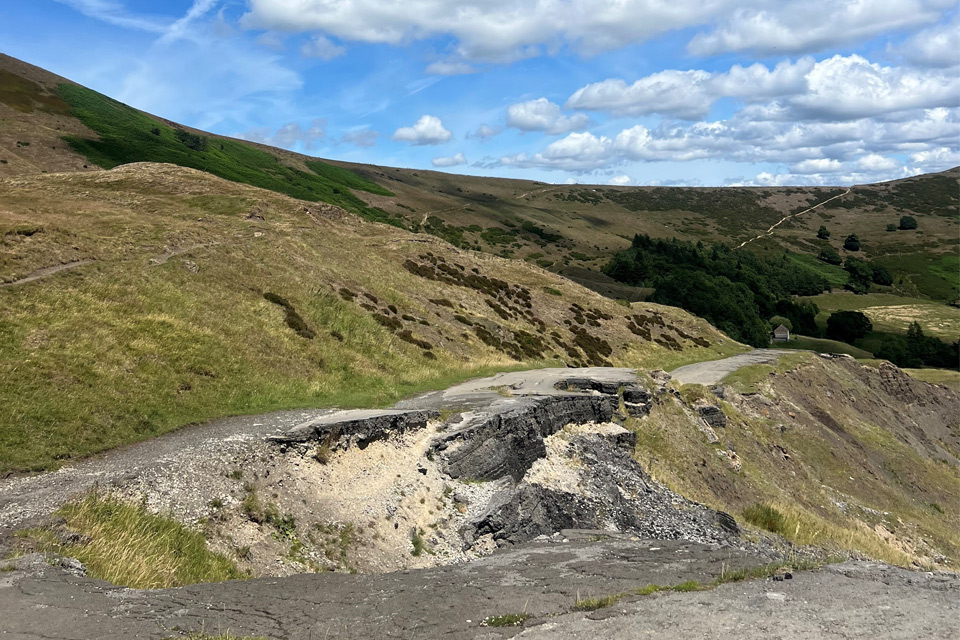
Artificial intelligence helps scientists identify 3000 moving slopes potentially at risk of landslide
25/09/2025
A new approach that combines AI and satellite data has been used by scientists to detect actively moving landslides at a national scale.
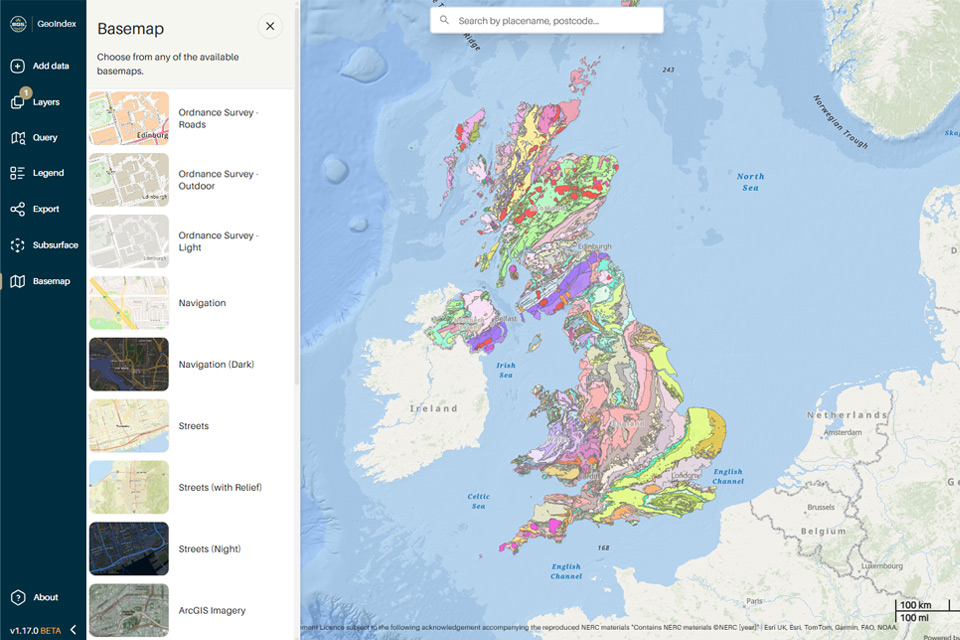
New BGS GeoIndex viewer released for user testing
24/09/2025
The premium map-viewing application has been given a major upgrade and made available as a beta release.
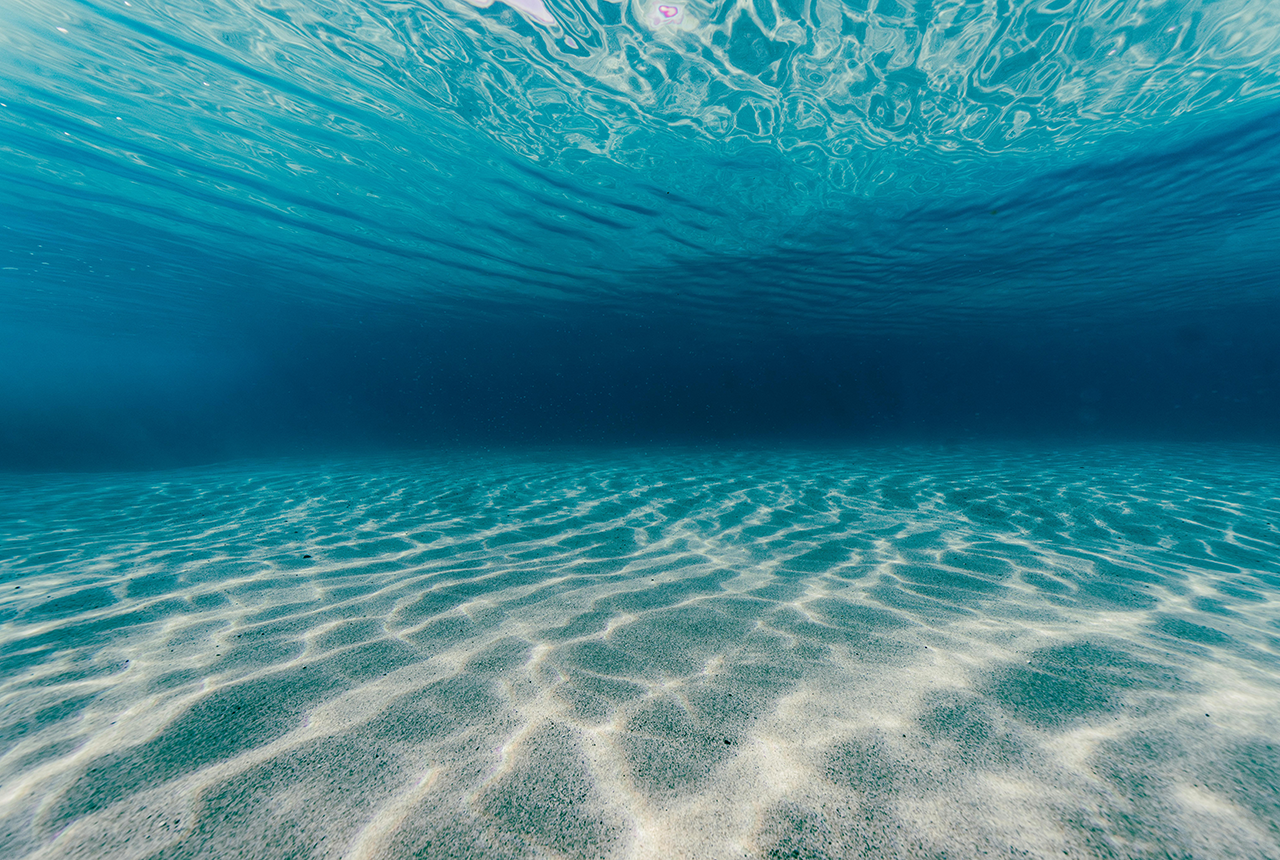
New seabed sediment maps reveal what lies beneath the waves
03/09/2025
Marine ecosystem science and offshore infrastructure will be boosted by a new dataset showing sediment composition across the UK continental shelf.
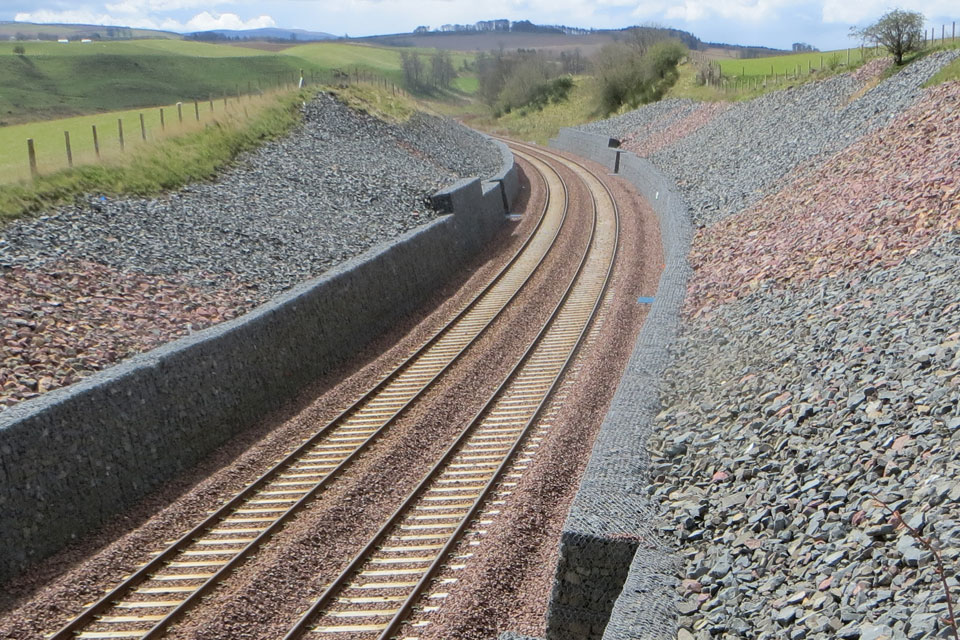
BGS artificial ground data: what do you need from a geological survey?
28/08/2025
BGS is seeking user feedback on artificial ground data: how you use it, what information you consider, and what we can do to improve our offering.
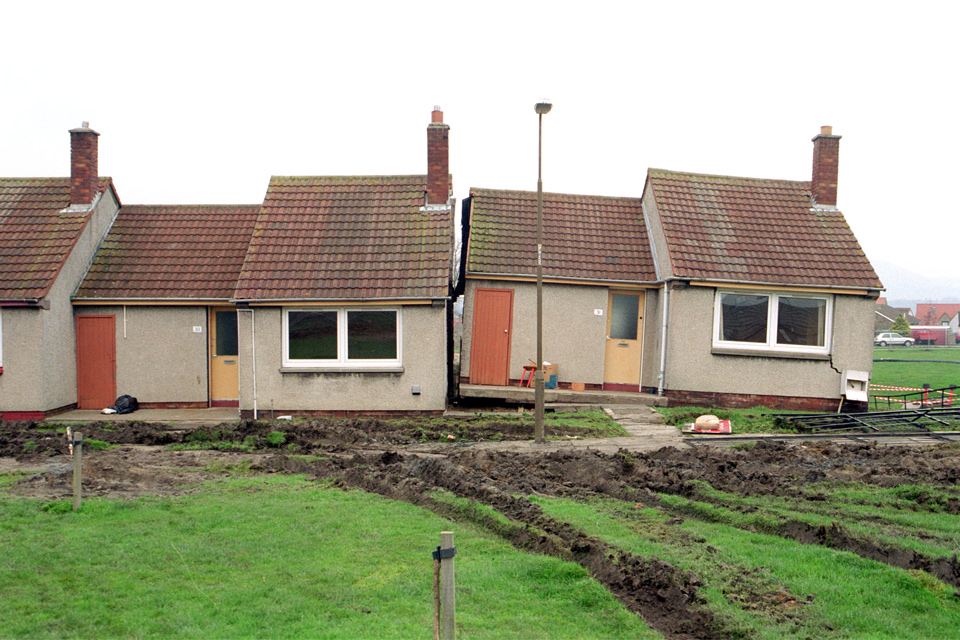
Is your region susceptible? Britain’s geohazard hotspots revealed
14/08/2025
From sinkholes to radon: new maps highlight the most geologically at-risk regions
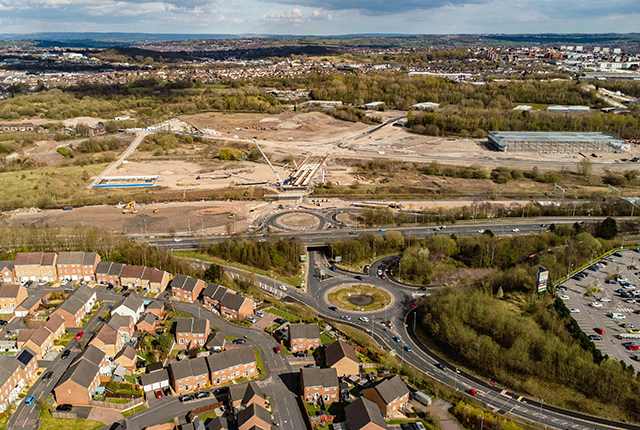
New tool helps identify coal mine gas risk for housing developments in Scotland
05/08/2025
Scientists have co-developed a new tool for North Lanarkshire Council to help screen coal mine gas emissions prior to the development of new houses and buildings.
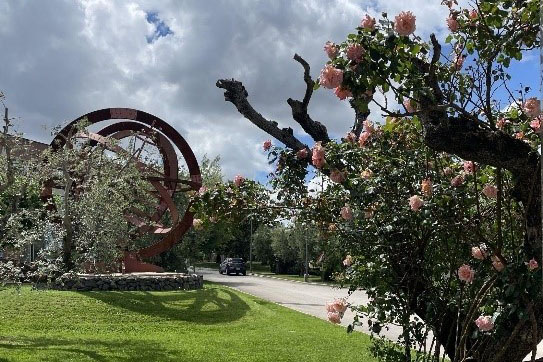
AI and Earth observation: BGS visits the European Space Agency
02/07/2025
The newest artificial intelligence for earth science: how ESA and NASA are using AI to understand our planet.



